By Alix Paultre, contributing editor
This year’s Applied Power Electronics Conference (APEC) in San Antonio, Texas (Anaheim, California, next year), was larger than the last and represents the new energy in the power industry (pun intended). Over 5,000 power electronics engineering professionals attended, and APEC broke records in two significant categories — the number of “full conference” attendees and the number of attendees who also signed up for the Sunday and Monday seminars occurring outside of the exhibition.
In addition, the Power Sources Manufacturers Association’s (PSMA’s) full-day workshops on Saturday covering Magnetics and Capacitors were exceptionally well-attended. According to Greg Evans, one of the hard-working people behind the scenes, “It is abundantly clear that the continuing developments in power semiconductors (GaN, SiC and silicon) are a driving force behind this growing need for more knowledge and understanding of circuit topologies and component selection.”
In addition to the conference sessions, the combination of the largest APEC exhibition ever plus the largest number of industry sessions provided attendees with exposure to the very latest new product developments. The beauty of the exhibition is its comprehensive aspect for what is billed as a “power show” as manufacturers continue to expand their recognition of the importance of energy management in every facet of embedded electronics.
Evercell
The most interesting thing that we observed at APEC was some tech that was far from mature but one that held great promise. The Evercell thermal harvester demonstration unit was seen in a live demonstration to produce a constant output of about 200 mV. Production of Evercell thermal harvesters will be scaled up to deliver an output of 1.2 Vdc.
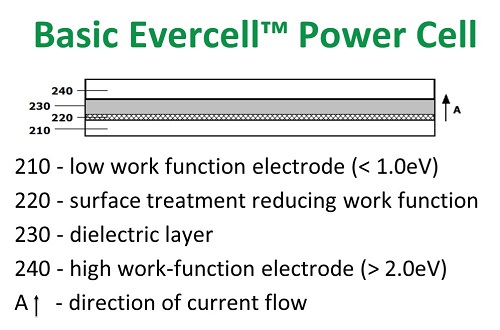
The basic design of the Evercell power cell is made up of four very thin layers in the tens to hundreds of nanometers. Opposing electrodes sandwich a dielectric that is less than 200 nm thick. The surface of the donor electrode is surface-treated to lower the work function of its surface, thereby imposing a low work-function surface in intimate contact with the donor electrode facing the dielectric. It was explained to us as kind of a nanotech “Maxwell’s Demon.” This will be a significant breakthrough — a revolutionary one — if it can scale well.
Texas Instruments
A 1-MHz active clamp flyback chipset and industry-first 6-A three-level buck battery charger from Texas Instruments can cut power supply size and charge time in half. Operating at up to 1 MHz, TI’s new chipset combines the UCC28780 active clamp flyback controller and the UCC24612 synchronous rectifier controller. For battery-powered electronics that need maximum charging efficiency in a small solution size, the bq25910 6-A three-level buck battery charger enables up to a 60% smaller-solution footprint.
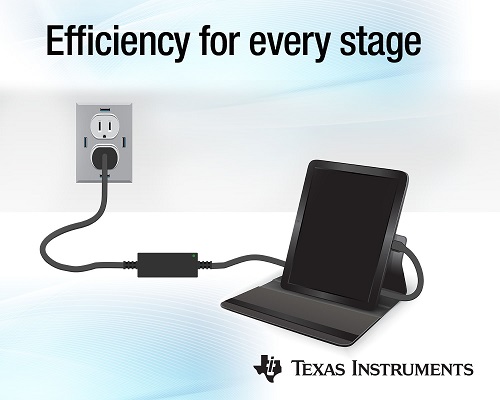
Designed to work with both gallium nitride (GaN) and silicon (Si) FETs, the UCC28780’s advanced and adaptive features enable the active clamp flyback topology to meet modern efficiency standards. With multimode control that changes the operation based on input and output conditions, pairing the UCC28780 with the UCC24612 can achieve and maintain high efficiency at full and light loads.
Littelfuse
Littelfuse added two 1,200-V silicon carbide (SiC) n-channel, enhancement-mode MOSFETs, the latest products of a strategic partnership that Littelfuse formed with Monolith in 2015 to develop power semiconductors for industrial and automotive markets. The LSIC1MO120E0120 and LSIC1MO120E0160 SiC MOSFETs offer ultra-low on-resistance (RDS(on)) levels of just 120 mΩ and 160 mΩ, respectively.
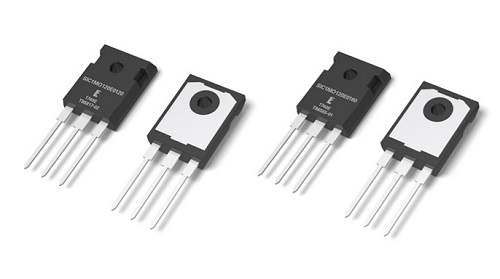
These SiC MOSFETs are designed for use as power semiconductor switches in a wide range of various power conversion systems, outperforming their silicon MOSFET counterparts substantially in terms of blocking voltage, specific-on resistance, and junction capacitances. The new 1,200-V SiC MOSFETs offer a reduction in passive filter components at the system level and support increased power density, and its extremely low gate charge and output capacitance combined with ultra-low on-resistance allows for minimal power dissipation, higher efficiency, and a reduction in the size and sophistication of the cooling techniques required.
Navitas
Presented as the first GaN power ICs, Navitas Semiconductor’s iDrive NV6131, NV6105, and NV6115 offer a high-efficiency 650-V, 160-mΩ power FET with increasing integration of digital and analog circuits, leading to groundbreaking speed, energy efficiency, power density, and reduced system cost. GaN can enable up to 100x higher frequencies than silicon, but driving, controlling, and protecting such high-speed power devices has been an industry challenge that has limited adoption.
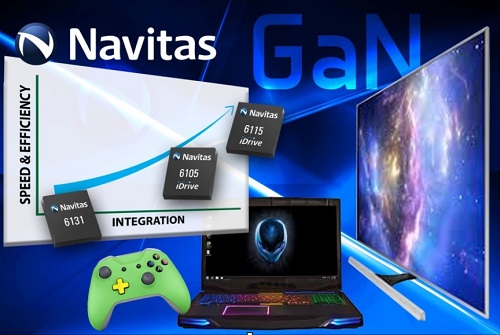
By integrating these critical digital and analog circuits monolithically with the GaN power device, these system-level problems have been eliminated. Navitas GaN Power ICs with iDrive guarantee optimized and robust performance for any application. A 10x to 100x increase in system operating frequency is combined with higher efficiencies to enable up to a 5x increase in power densities and 20% lower system costs.
Power Integrations
Addressing the expanding need for digital functionality in power supplies, Power Integrations released its InnoSwitch3-Pro family of configurable offline CV/CC and CP flyback switcher ICs. Capable of delivering up to 65 W and achieving up to 94% efficiency across line-and-load conditions, the new devices permit precise, dynamically adjustable control of voltage (10-mV step) and current (50-mA step) via a simple two-wire I2 C interface. Devices may be paired with a microcontroller or take inputs from the system CPU to control and monitor the offline power supply.
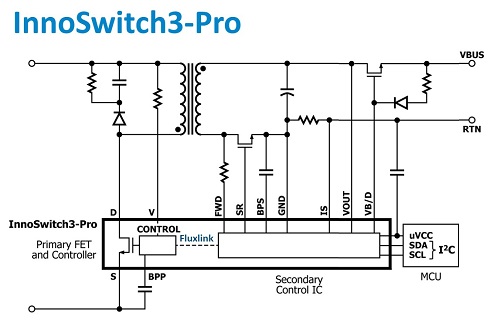
InnoSwitch3-Pro power-conversion ICs include a microprocessor VCC supply, eliminating the need for an external LDO to power the microcontroller; also included is an n-channel FET driver, which may be used to enable or disable the main power output. Together with integrated bus voltage, current- and fault-reporting telemetry, and dynamically configurable protection functions such as OTP, line OV/UV, output OV/UV, and short-circuit, the BOM count for a sophisticated offline power supply is significantly reduced and design complexity is dramatically simplified. InnoSwitch3-Pro ICs employ Power Integrations’ high-speed digital communications technology, FluxLink, synchronous rectification, quasi-resonant switching and a precise secondary-side feedback sensing and feedback control circuit.
GaN Systems
Underscoring the migration of wide-bandgap devices into more application spaces, GaN Systems claimed the industry’s highest-current and power-efficient 100-V GaN power transistor, the 100-V, 120-A, 5-mΩ GaN E-HEMT device. It is 1.3x the current rating of GaN Systems’ own 90-A part and 2.4x to 4.6x the current rating of other high-current GaNs in the industry. The GS-010-120-1-T is an enhancement-mode GaN-on-silicon power transistor that leverages all of the die design and packaging advantages delivered from GaN Systems.
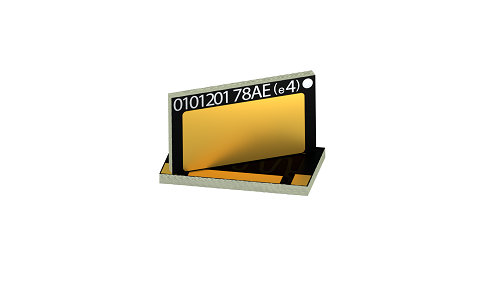
This revolutionary transistor is ideal for the growing 48-V applications in the automotive, industrial, and renewable energy industries that require power systems with high power levels in smaller form factors. The transistor is footprint-compatible with GaN Systems’ 100-V, 90-A GaN E-HEMT (GS61008T), thereby enabling customers to add further power by substituting the GS-010-120-1-T without changing their board. Increasing the current capability in the same-sized package allows customers to effectively increase the power by 33% for the same system volume.
ON Semiconductor
Enabling precise wide-range dimming in modern LED lighting applications, ON Semiconductor announced two new QR PSR PWM controllers for LED lighting with power factor control (PFC) function. The dimmable NCL30386 and the non-dimmable NCL30388 are high-power-factor (PF), single-stage, constant-current (CC) and constant-voltage (CV) primary-side-regulated (PSR) pulse-width-modulation (PWM) controllers for flyback, buck-boost, or sepic power topologies. They operate in quasi-resonant (QR) mode to achieve efficiency levels that exceed those stipulated in power standards such as the EU’s Ecodesign, as well as ENERGY STAR and the NEMA SSL regulations.

The integrated digital power factor correction (PFC) algorithm ensures a PF of greater than 0.95 and total harmonic distortion (THD) of less than 10% across a universal input voltage range. Integrated high-voltage startup current source ensures fast startup, low standby power, and wide-range operation at the output. Current and voltage are regulated via a digital PSR CC/CV loop control, typically achieving in the region of ±2%, to give highly uniform lighting brightness under all conditions. The devices are simple to use and operate from a wide VCC range of 9.2–26 Vdc, with valley lock-out and frequency foldback ensuring high efficiency across the entire voltage range.
Silicon Labs
The rapid expansion of the IoT is boosting demand for PoE+ connectivity in IP cameras, smart lighting luminaires, feature-rich video IP phones, advanced 802.11 wireless access points, and smart home appliances. Addressing this, Silicon Labs released the Si3406x and Si3404 families, which include all necessary high-voltage discrete components on a single PD chip. The new PD ICs support IEEE 802.3 at PoE+ power capabilities, flexible power conversion options exceeding 90% efficiency, robust sleep/wake/LED support modes, and superior EMI immunity.
![]()
The Si3406x ICs integrate all power management and control functions required for a PoE+ PD application, converting the high voltage supplied over a 10/100/1000BASE-T Ethernet connection to a regulated, low-voltage output supply. The optimized architecture minimizes printed circuit board (PCB) footprint and external BOM cost by enabling the use of economical external components while maintaining high performance.
Complementing the Si3406x family, the Si3404 IC offers cost-effective, 802.3 Type 1-compliant support for lower-power 15-W PoE PD applications. The Si3404 includes all interface and control functions required for low-power PD applications in a very small footprint. The Si3406x ICs integrate diode bridges and a transient surge suppressor, enabling direct connection to an Ethernet RJ-45 connector.
Advertisement
Learn more about Electronic Products Magazine





